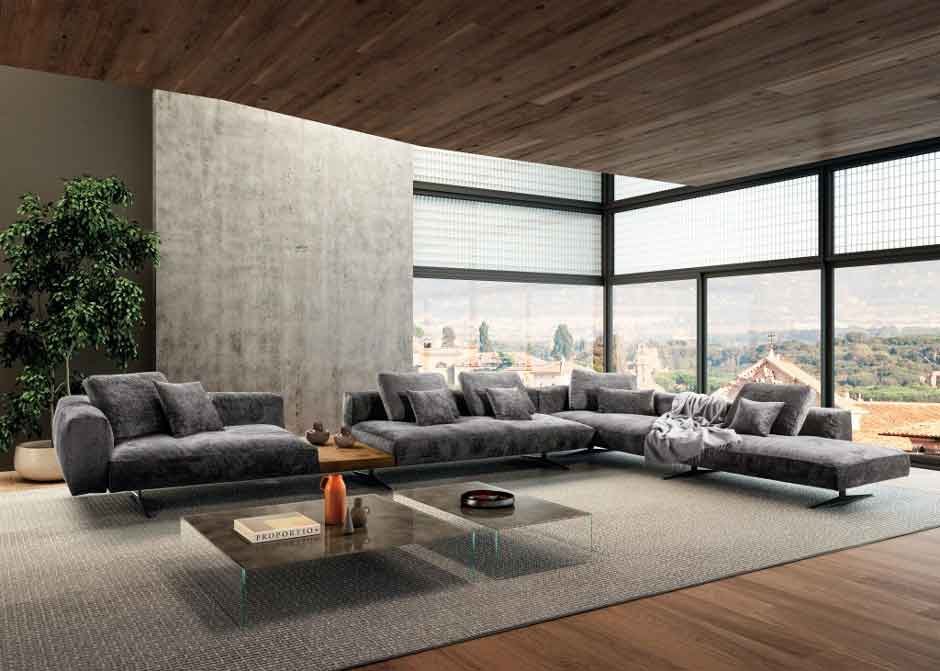Italian craftsmanship represents a fascinating fusion of tradition and innovation, particularly evident in the furniture industry. Known for its elegance and refinement, Italian furniture combines ancestral techniques with modern innovations to create unique pieces that enhance our interiors.
Italian artisans master the art of blending traditional craftsmanship with contemporary materials and technologies, offering creations that combine aesthetics and functionality. This combination enriches interior design and continues to set influential trends worldwide, showcasing the excellence of Made in Italy.
The heritage of traditional Italian furniture
The history of Italian furniture is rich and varied, dating back centuries of creativity and artisanal mastery. Classical styles, such as those of the Renaissance and Baroque periods, have had a considerable influence on the aesthetics of furniture worldwide. Furniture from this era is distinguished by its detailed ornamentation, noble materials, and attention to detail.
Moreover, traditional craftsmanship techniques, such as marquetry, wood carving, and the use of gilding, have been passed down through generations. These methods give Italian furniture a quality and durability that make it timeless.
Artisans of the past attached great importance to every step of the manufacturing process, from material selection to finishing, thus ensuring the creation of pieces of great beauty and remarkable robustness. This is a characteristic that is also found in modern Italian furniture.
Innovation in Italian furniture design
Today, Made in Italy furniture design continues to evolve by incorporating technological innovations and modern materials. Italy, the birthplace of many world-renowned designers, is at the forefront of innovation in the sector.
Italian designers constantly explore new materials to push the boundaries of design and offer pieces that are both aesthetic and functional. Tempered glass, for example, allows for the creation of tables and shelves of great finesse, while ensuring robustness and safety. Wood, used for centuries, is reinterpreted in a contemporary way to create elegant and durable surfaces, perfect for coffee tables.
These materials, combined with traditional craftsmanship techniques, allow for the creation of furniture distinguished by its unique style and exceptional quality. The harmonious marriage of the old and the new is what makes Italian furniture so distinctive and sought after, continuing to inspire and influence interior design worldwide.
The impact of Italian artisanal furniture on interior design
It is easy to understand how Made in Italy furniture has influenced and continues to influence interior decoration trends. Designers often seek unique pieces that bring character and authenticity to their projects. Italian furniture, with its clean lines and high-quality materials, fits perfectly into various decorating styles, from classic to modern.
Interior projects using Italian artisanal furniture are distinguished by their elegance and sophistication. For example, incorporating a wood dining table or woven leather chairs into a living space can completely transform the atmosphere, adding a touch of luxury and refinement. These pieces often become the focal points around which the rest of the decoration is arranged.
The promising future of Italian artisanal furniture
The future of Italian artisanal furniture looks promising thanks to a new generation of designers and artisans who perpetuate tradition while embracing innovation. By adopting sustainable practices and exploring ecological materials, they address contemporary environmental concerns.
Furthermore, digital platforms and social networks allow Italian artisans to reach a wider international audience, thus shining the spotlight on the excellence of Made in Italy worldwide. Supporting these specialists not only preserves a rich cultural heritage but also encourages the creation of unique and timeless furniture that enhances our living spaces.
LAGO: innovation and tradition in Made in Italy furniture
Founded in 1976, LAGO is a renowned Italian company in the field of interior design. Driven by unwavering passion, it is dedicated to creating elegant and “Made in Italy” furnishing solutions stemming from in-depth research. Designed to enhance not only homes but also communal spaces such as hotels, boutiques, and restaurants, these products meet the most diverse requirements in terms of style and functionality.
LAGO’s innovative approach has its roots in the late 19th century, a period during which the first wooden furniture was manufactured. In 2006, with the arrival of the fourth generation, the company began to expand internationally.
In addition to its innovative design, LAGO has adopted an unconventional communication strategy focused on digital platforms. Led by the young entrepreneur Daniele Lago, the company places culture at the heart of its strategic vision for development.
LAGO is built on fundamental values that form its identity. An expanded vision of design is emphasized, considering it as a powerful tool for social transformation. Another essential pillar is the company’s commitment to environmental sustainability. LAGO exclusively uses materials that meet very strict quality standards throughout the furniture manufacturing process.
The furnishing solutions presented by LAGO are designed to seamlessly integrate into all living spaces. Each product is characterized by elegant lines and timeless design, ensuring remarkable durability.
With a constantly expanding community, counting more than 25 million members, LAGO is committed to improving its digital environment. In 2023, the launch of the new website aimed to offer an inclusive and personalized browsing experience for each user.
The new platform has offered notable benefits, such as a reduction in bandwidth consumption, a decrease in costs by up to 70%, and a diminution in CO2 emissions by nearly 40%. These results confirm LAGO’s commitment to a more environmentally friendly future.






